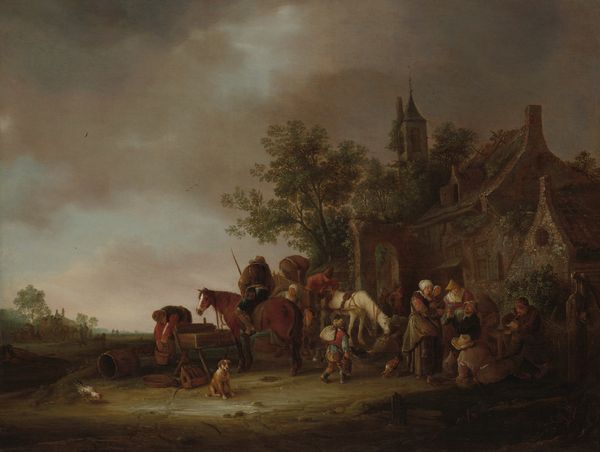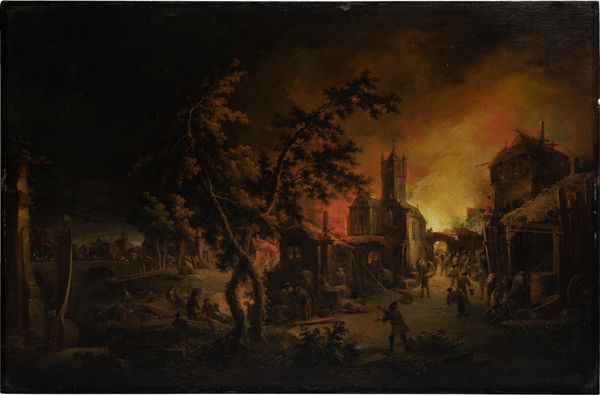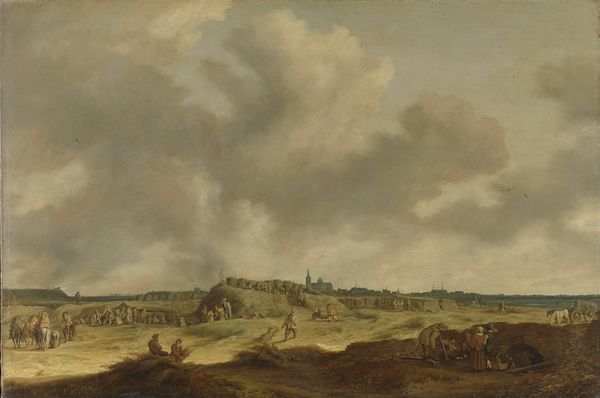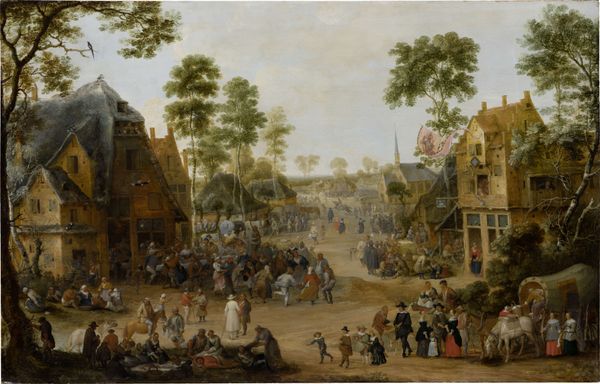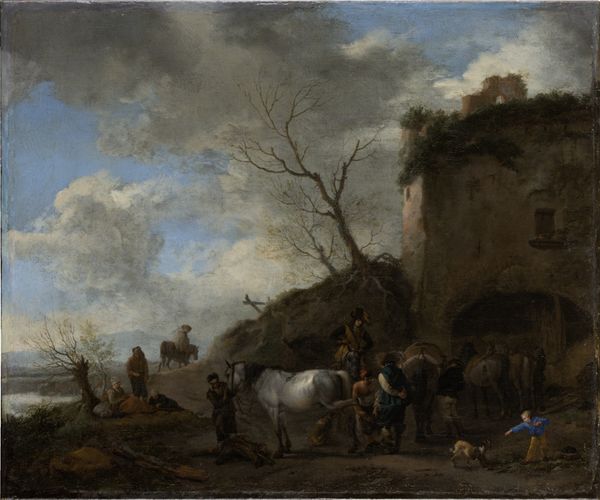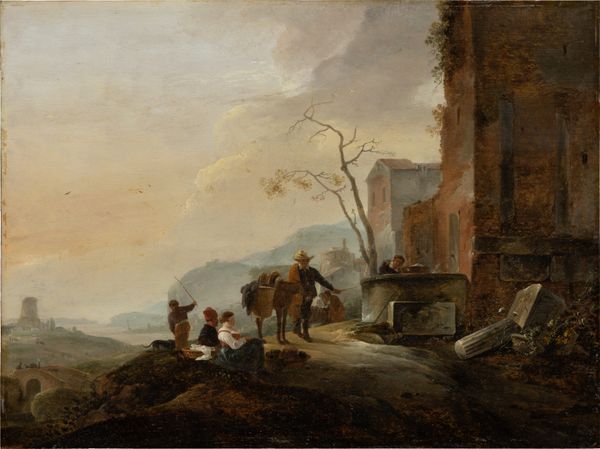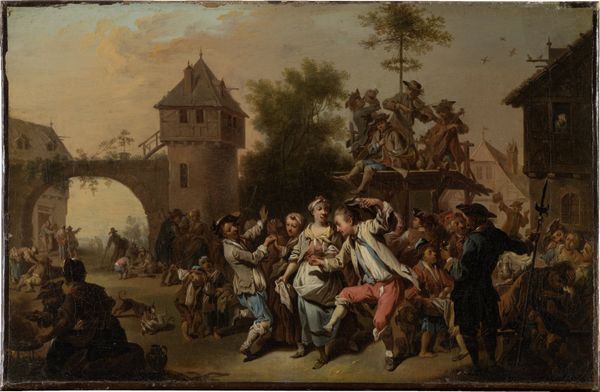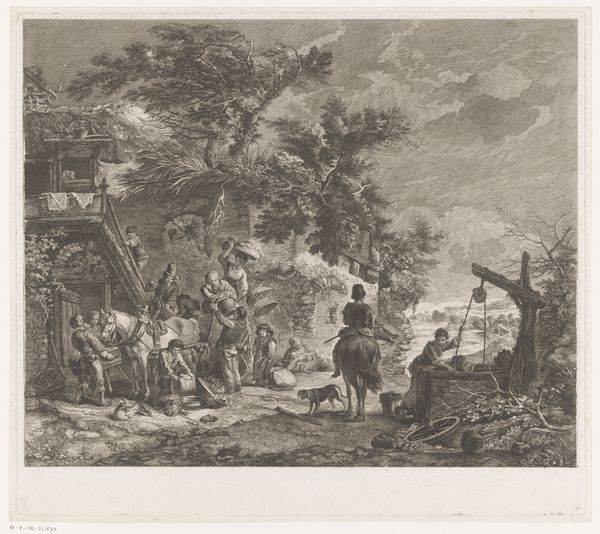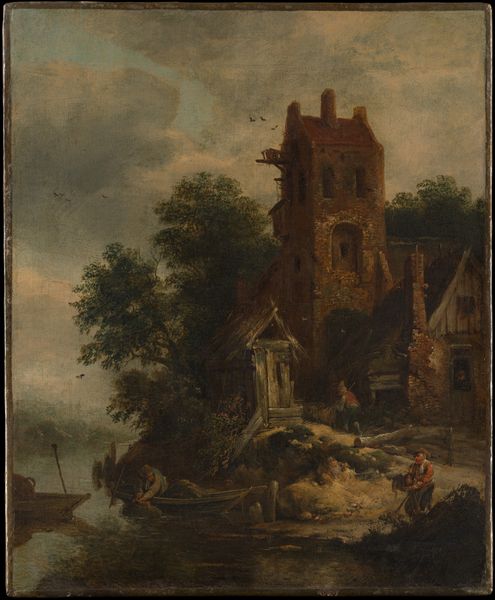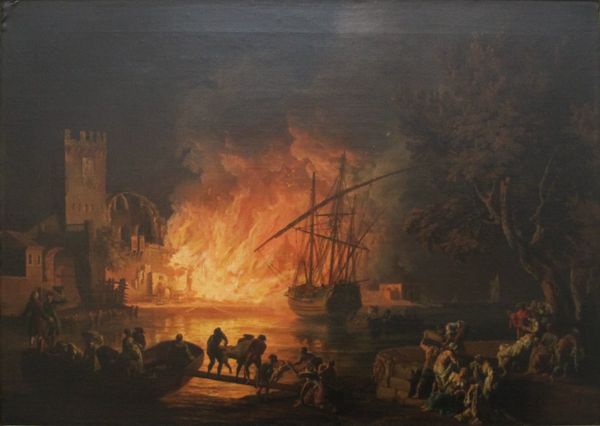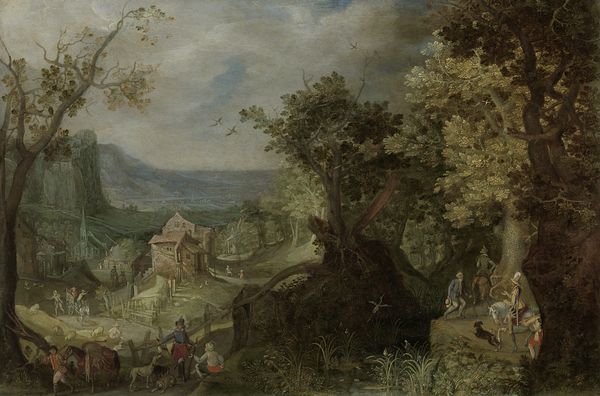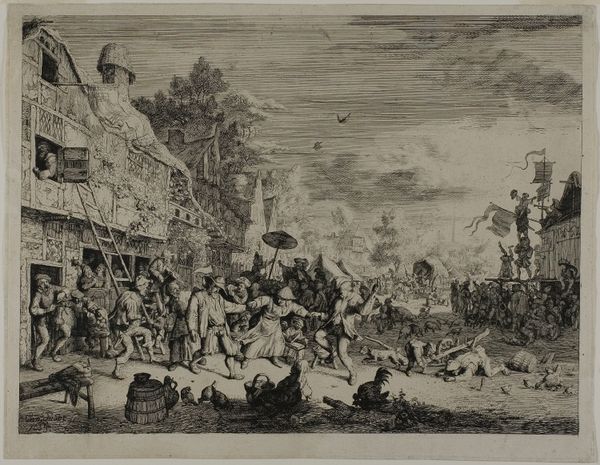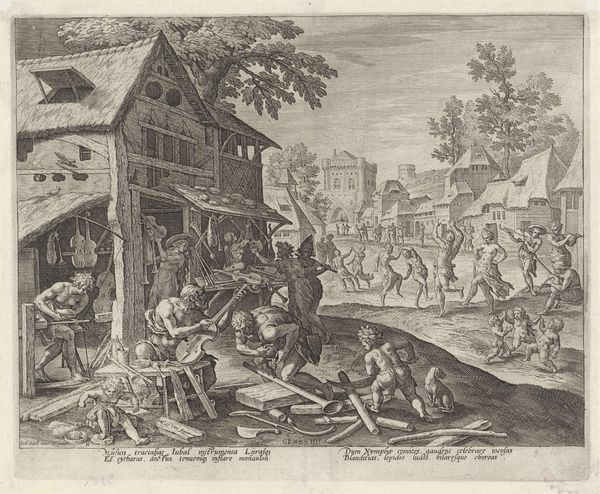
The Angel Raphael Takes Leave of Old Tobit and his Son Tobias 1618
0:00
0:00
painting, oil-paint, wood
#
narrative-art
#
baroque
#
painting
#
oil-paint
#
landscape
#
figuration
#
wood
#
history-painting
#
mixed media
Dimensions: 62 cm (height) x 93 cm (width) (Netto), 88.7 cm (height) x 119.7 cm (width) x 9.5 cm (depth) (Brutto)
Editor: So, this is Pieter Lastman's "The Angel Raphael Takes Leave of Old Tobit and his Son Tobias," painted in 1618. It’s an oil on wood panel. There’s such drama to the scene— a nighttime setting with all these figures…what grabs you when you look at this? Curator: The scene unfolds with a clear division between the earthly and the divine. Look at how the artist uses light – a conventional Baroque technique, sure, but look closely. Do you notice how it emanates from Raphael, setting him apart? What might that tell us about the cultural memory surrounding angels at that time? Editor: Hmm, good point! So the angel is luminous, but everyone else is in shadow. It makes him look separate from them, even though they're all looking right at him. I guess angels are like messengers. Curator: Exactly! Note the symbolism: Tobias and his father, embodying faith rewarded with restored sight and fortune. Raphael is not just an angel; he's a symbol of divine intervention, right? So consider: in Lastman’s time, with wars and religious conflicts, what resonance might this image have had? Editor: That makes sense! A message of hope, maybe? Especially since Tobias went through a journey to find the cure for his father's blindness… Curator: And that journey itself? Is that not symbolic, too? Remember, this story is from the Book of Tobit, not within the Protestant Bible canon prevalent in the Netherlands. Lastman’s choice invites speculation – a visual assertion, perhaps? Editor: So it's not just a pretty picture; it carries so much weight, the symbolism connecting past stories with the present? Wow. Thanks for that. Curator: Precisely. It demonstrates the powerful use of religious narrative and character-driven symbols that would shape art for decades after. What starts as an encounter can transform into shared understanding of timeless stories and historical impact, wouldn't you agree?
Comments
statensmuseumforkunst over 1 year ago
⋮
/ When Christian IV decorated his devotional chamber (burnt in 1859) at the Frederiksborg Castle Church, he bought art from several prominent artists of the period. Lastman was one of them. He was famed for his depictions of biblical scenes. According to Book of Tobit, Tobias had to endure many hardships to procure medi¬cine for his blind father Tobit. During his travels Tobias is accompanied by a stranger who reveals himself as the angel Raphael. Lastman depicts the moment after this revelation where Raphael is leaving the earthly realm for the celestial spheres. He says: ‘While you are on this earth, you must praise the Lord God and give him thanks. Now I must go back to him who sent me. Write down everything that has happened to you….’ Lastman’s angel communicates this with his gesture: one arm points down towards the earthly realm while the other shows the way to the heavens.
Join the conversation
Join millions of artists and users on Artera today and experience the ultimate creative platform.
statensmuseumforkunst over 1 year ago
⋮
Like so many other artists of the day Pieter Lastman went to Rome when his studies were completed. Here, he met artists such as the German painter Adam Elsheimer (1578-1610). Inspired by Elsheimer, Lastman adopted and developed the so-called cabinet pieces, small paintings showing scenes from the Bible, history, or mythology. The painting's story The story of Tobias and his guardian angel, the archangel Raphael, is related in the book of Tobit from the Apocrypha of the Old Testament. It takes place in Ninive, the Assyrian city to which the Israelites had been deported. Tobias faces many trials and tribulations to obtain the medicine he needed for his blind father Tobit. New subject matter As the art theory of the time called for, Lastman made it a point of honour to come up with new subject matter that no other artist had ever depicted. Lastman placed the scene within his own time through the objects used in the still life in the foreground. The silver pitcher in the very elaborate and organic auricular style is by the Dutch silversmith Adam van Vianen (1568/69-1627). He was commissioned to make the piece by the Silversmiths’ Guild in Amsterdam.
